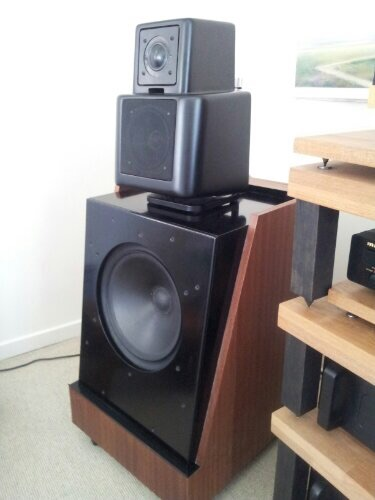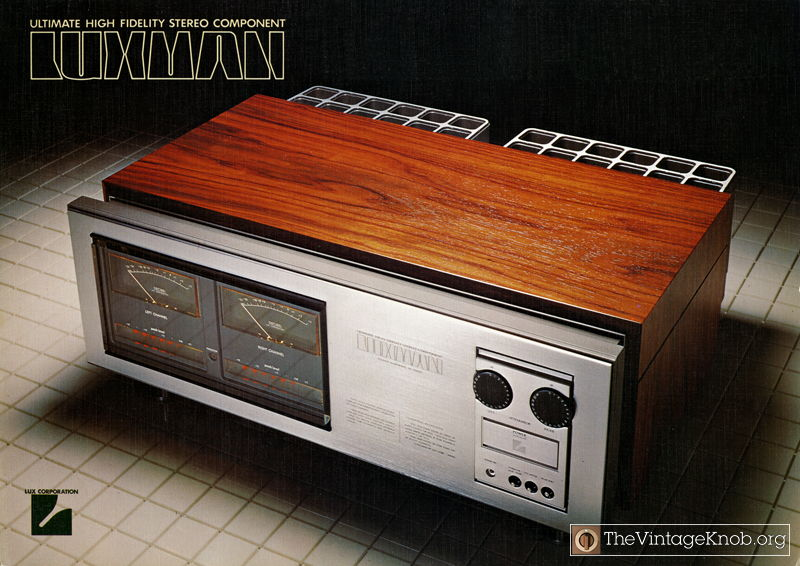I find it interesting to compare todays Hi End offerings to those from many years ago. This of course can be done for sound quality, but also on a price basis.
The sound quality comparison has been discussed, with some people preferring vintage horn speaker, but with most people agreeing that audio equipment has continued to improve. I don’t really want to debate that, but am just interested in the effects of inflation and depreciation on pricing.
Now to do this I am going to use Shadowstasts inflation calculator which uses the 1980 CPI measurements rather than any of the current government inflation calculators that give artificially low results. And we all know that prices in Hi End audio have not been stagnant.
I would like to use a couple of equipment examples from when I first got into hifi – mid 1970’s. These items were statement products of their time, but would not be taken seriously today.
The first example is the Kef R105 released in 1977.

I remember when these arrived in my local hifi store, in Melbourne Australia, I lusted after them so badly but they were just so far out of my ability to pay for them. I was in my first job and grossed about A$3000, while the R105s sold for about A$3600 (In those days Australia had import duties on imported luxury goods which could double the cost).
This would be the same today as having a gross income of $110,000 and wanting to buy some Wilson Alex Vs. They would have to go on credit.
The second example is the Luxman M6000 power amp which was released in 1975 and sold for something like US$6000 (much more in Australia). I never saw one of these in the flesh until many years later in a second-hand store.

Now lets look at what these items would cost if manufactured and sold new today. Using the Shadowstats inflation calculator, having taken 50% off the Kef R105s to remove the tax to get A$1800, we get an inflated price of around A$60,000 today, which is comparable to many similar sized mid-range hi-end speakers today. Interestingly, these speakers can occasionally be picked up on the second hand market, in good condition, for something like $1,500, which shows the effect of depreciation over time
The inflation adjusted price of the Luxman M-6000, would be US$225,000, comparable to some of the current hi-end offerings. Interestingly the M-6000 can be had, refurbished, for around US$6000.
One item that has bucked the depreciation trend a bit is the BBC LS3/5a, which had a revival due to being promoted very heavily by Ken Kessler. These cost about $400 when they came out in 1977, which would be about $13,400 today. An original pair in very good condition can fetch between $3000 and $5000.
What do you think?
The sound quality comparison has been discussed, with some people preferring vintage horn speaker, but with most people agreeing that audio equipment has continued to improve. I don’t really want to debate that, but am just interested in the effects of inflation and depreciation on pricing.
Now to do this I am going to use Shadowstasts inflation calculator which uses the 1980 CPI measurements rather than any of the current government inflation calculators that give artificially low results. And we all know that prices in Hi End audio have not been stagnant.
I would like to use a couple of equipment examples from when I first got into hifi – mid 1970’s. These items were statement products of their time, but would not be taken seriously today.
The first example is the Kef R105 released in 1977.

I remember when these arrived in my local hifi store, in Melbourne Australia, I lusted after them so badly but they were just so far out of my ability to pay for them. I was in my first job and grossed about A$3000, while the R105s sold for about A$3600 (In those days Australia had import duties on imported luxury goods which could double the cost).
This would be the same today as having a gross income of $110,000 and wanting to buy some Wilson Alex Vs. They would have to go on credit.
The second example is the Luxman M6000 power amp which was released in 1975 and sold for something like US$6000 (much more in Australia). I never saw one of these in the flesh until many years later in a second-hand store.

Now lets look at what these items would cost if manufactured and sold new today. Using the Shadowstats inflation calculator, having taken 50% off the Kef R105s to remove the tax to get A$1800, we get an inflated price of around A$60,000 today, which is comparable to many similar sized mid-range hi-end speakers today. Interestingly, these speakers can occasionally be picked up on the second hand market, in good condition, for something like $1,500, which shows the effect of depreciation over time
The inflation adjusted price of the Luxman M-6000, would be US$225,000, comparable to some of the current hi-end offerings. Interestingly the M-6000 can be had, refurbished, for around US$6000.
One item that has bucked the depreciation trend a bit is the BBC LS3/5a, which had a revival due to being promoted very heavily by Ken Kessler. These cost about $400 when they came out in 1977, which would be about $13,400 today. An original pair in very good condition can fetch between $3000 and $5000.
What do you think?






